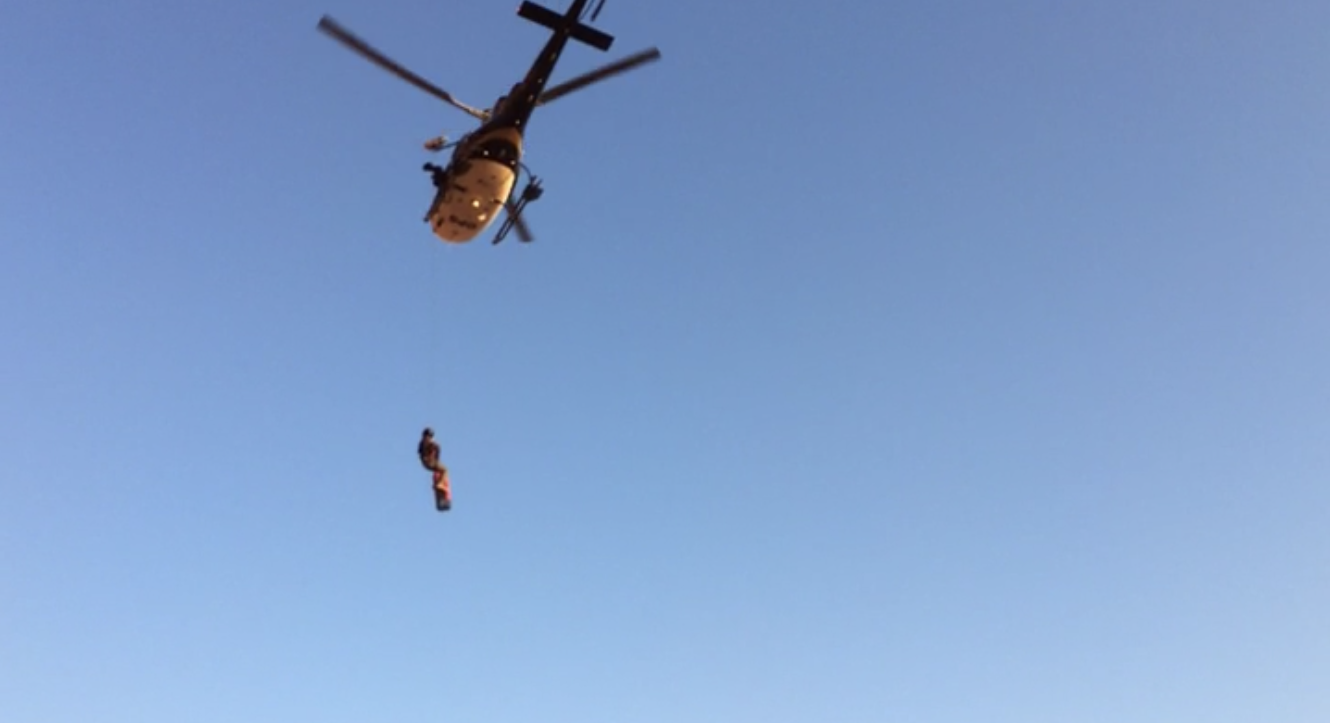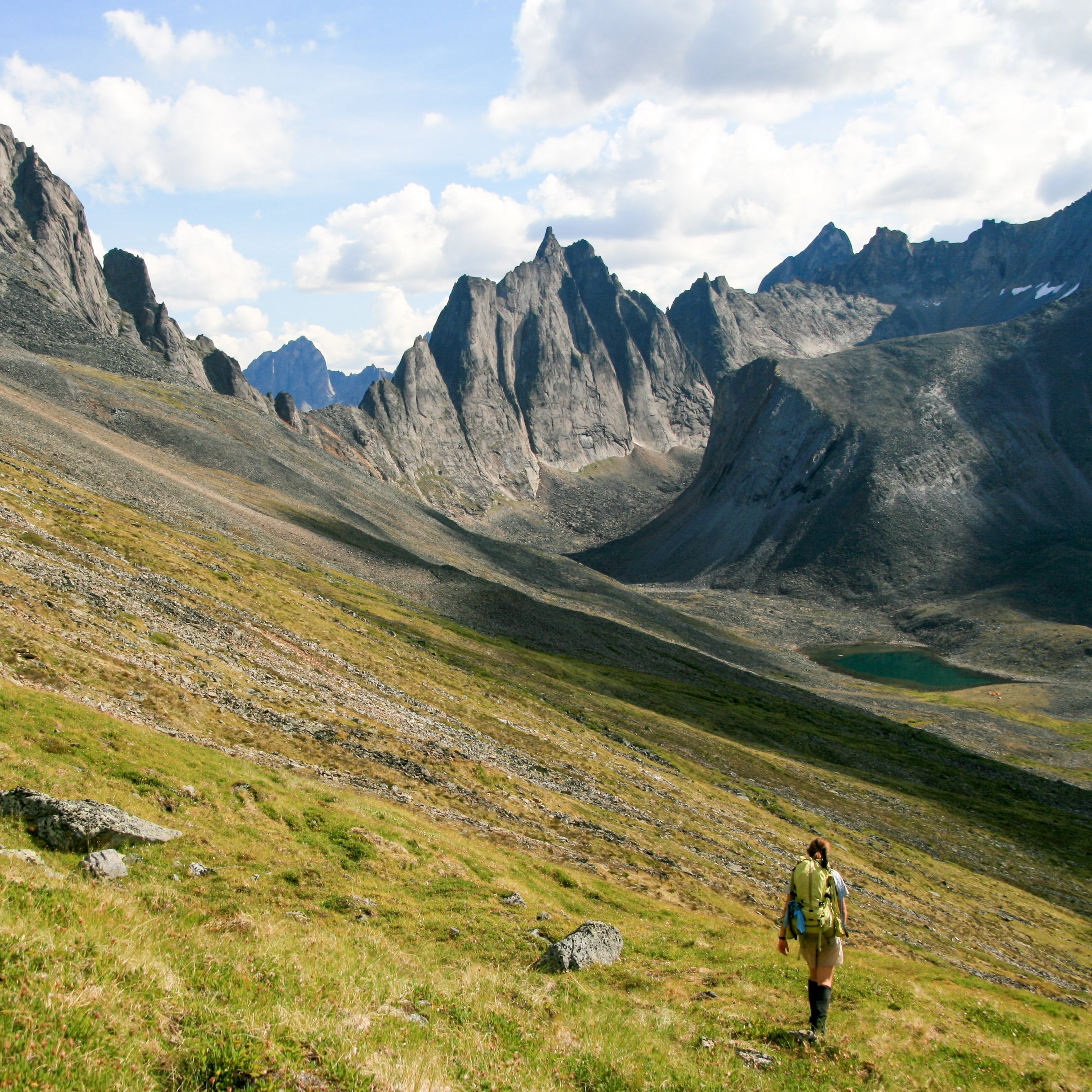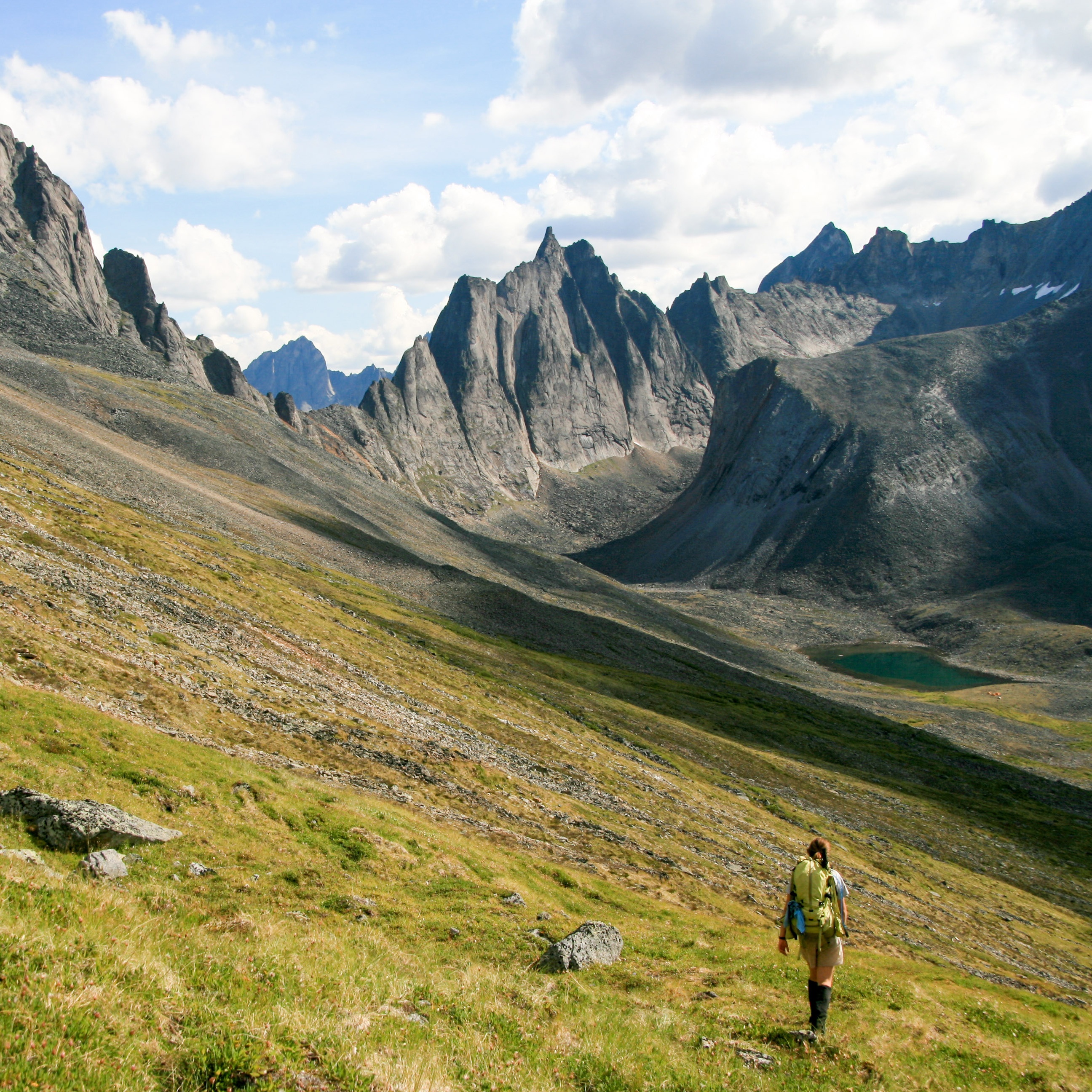Editor’s note: This case study is based on a real-life incident responded to by NOLS Wilderness Medicine Instructor Jake Blackwelder.
THE SETTING
.jpg)
Photo by Jacob Blackwelder.
You are a member of your community’s Search and Rescue team. You and an emergency medical services (EMS) team are responding to the scene of a BASE-jumping accident. You heard from the dispatch report that “The jumper’s parachute opened shortly before he hit the wall and then the ground. He has multiple broken bones.”
As you and your team gather your gear and head out, the sun has just set, skies are clear, and although the temperature is starting to cool, it is still about 90°F (32°C). This rescue may take all night. To get to the scene, you’ll have to scramble for 40 minutes up a steep, unstable talus slope to the patient.
When you arrive, you find the patient lying in a large patch of blood-soaked sand and rock. He had jumped off a cliff with a parachute and likely struck both the cliff wall and the ground at a high rate of speed. He’s looking at you and appears to be in a lot of pain.
You size up the scene for safety for yourself and fellow rescuers. The ground is sloped at around 40 degrees; loose rocks and boulders look as if they can easily tumble down onto the other rescuers also heading up to the scene.
SOAP REPORT
Subjective
The patient has jumped off a cliff with a parachute that, according to bystanders, opened before he hit the wall and then the ground. They state, “It looked like he hit the ground at about 70 mph!” There is an obvious mechanism for a spine injury. The patient was wearing a helmet, which he is still wearing. He has many injuries but complains the most about the pain in his right leg.
Objective
The patient is awake but seems disoriented. He has an open and clear airway, and is breathing adequately on his own. He has a strong radial pulse. There is pain upon palpation to the patient’s left shoulder and left wrist with no deformities noted. CSMs are intact in the upper extremities and the left leg. On the left leg, you see an open fracture on the patient’s lower leg with about 2/3 of the bone, muscle and other tissues and structures visible. The left foot appears to be intact with no structural deformities.
On the right leg, there is a partial amputation of the leg below the knee with only about 10% of the lower leg still attached. A bystander has applied an improvised tourniquet just above the wound, though active bleeding continues. There is a closed and obviously deformed fracture of the right ankle. Amazingly, the patient can move the toes on his right foot; however, the right foot is cold to the touch, no pulses are present, and the patient has no feeling in his right leg below the fracture site. The patient denies any head, neck, or back pain.
Vital Signs
|
Time |
9:00 p.m. |
|
Level of Responsiveness (LOR) |
A+Ox2 (Alert to person and place only) |
|
Heart Rate (HR) |
118, strong and regular |
|
Respiratory Rate (RR) |
26, regular and unlabored |
|
Skin Color, Temperature, Moisture (SCTM) |
Pale, cool, dry |
|
Blood Pressure (BP) |
100/66 |
|
Pupils |
PERRL (Pupils Equal, Round, Responsive to Light) |
|
Temperature |
Not Taken |
|
Pain |
10/10 |
Patient History
|
Symptoms |
Patient is nauseous, anxious, and scared that he will lose his legs |
|
Allergies |
The patient thinks Penicillin |
|
Medications |
Ibuprofen for chronic pain |
|
Pertinent History |
Previous open fracture of left leg 3 years ago requiring surgery |
|
Last oral intake/output |
Energy bars and “about 2 liters of water” in the last 6 hours. Patient has vomited multiple times with an estimated fluid loss of about ½ liter |
|
Events |
“When my parachute opened, the front was facing the toward the wall instead of away from it, causing me to hit the wall” |
STOP READING!
What is your assessment and plan? Take a few minutes to figure out your own assessment and make a plan. Don’t cheat—no reading on without answering this first!
Assessment
- Hypovolemic (low blood volume) shock secondary to hemorrhage and vomiting
- Obvious open fractures to his lower legs
- Possible left humeral head fracture
- Possible left clavicle fracture
- Possible left scapula fracture
- Possible left wrist fracture
- Mechanism for spine injury
Plan
- Make the scene safe! Clear the area just below the scene to ensure rescuers ascending from below are out of the path of any rocks that may roll down the slope
- Control the bleeding in the right lower leg
- Provide manual stabilization of the patient’s spine
- Communicate with the Incident Commander (IC) to give a patient update and request Advanced Life Support (ALS) personnel, a litter and litter team, and high-angle rescue equipment
- Remove the patient’s parachute harness and protective gear
- Clean and dress open wounds
- Splint fractures
- Reassess vitals frequently
- Move patient into litter
- Lower/carry the patient to an area where he can be airlifted
Anticipated Problems
- The scene may become unsafe due to the unstable terrain
- Worsening shock
- Compromised airway due to vomiting
- Pain management
- Managing bladder and bowel of the patient, as this rescue will take a lot of time
- Communications: dying radio batteries
- Rescuer safety and well-being: hydration, heat stress, etc.
THE TALE CONTINUES…

Photo by Jacob Blackwelder.
You call down to the rescuers below that they are in danger of rockfall and make a request to the IC to have someone re-route the ascent to prevent any other potential injuries.
You direct fellow rescuers to apply manual stabilization of the patient’s spine while you apply direct pressure and a pressure dressing to control bleeding of the right leg, but the bleeding continues. You replace the improvised tourniquet with a commercial tourniquet and reposition it to above the knee. This stops the bleeding. You and other rescuers remove the patient’s clothing and parachute harness and dress the wounds with the limited supplies you have on hand.
ALS personnel arrive and start IVs, give drugs, and provide intravenous fluids and some pain relief for the patient. The partial amputation and deformed ankle fracture are made to look “normal” using “Traction In Line, Traction Into Position” methods. Splints are fashioned from splinting equipment that you have on hand, including, the patient’s clothes and equipment
A litter and high-angle equipment arrive along with a few extra SAR personnel. They set up anchors and fixed ropes for the movement of the litter. Since you have adequate help, you direct the BEAMing (a technique for carefully moving a patient) of the patient into the litter and the patient is secured and readied for movement.
All of these treatments have taken about 90 minutes. The plan is to lower the patient down the slope to an area flat enough that a helicopter can land and airlift him. Moving the patient, first laterally 500 feet due to terrain and then down the slope, is slow and arduous. After another 90 minutes, you are still far away from a place flat enough for airlift.
It’s midnight. Vital signs have been assessed frequently. With the treatments performed so far, the patient’s mental status improves and his pain has eased.
Vital Signs
(No changes to SAMPLE history)
|
Time |
9:00pm |
9:20pm |
9:40pm |
|
Level of Responsiveness (LOR) |
A+Ox2 (Alert to person and place only) |
A+Ox3 |
A+Ox4 |
|
Heart Rate (HR) |
118, strong and regular |
120, strong and regular |
118, strong and regular |
|
Respiratory Rate (RR) |
26, regular and unlabored |
20, regular and unlabored |
22, regular and unlabored |
|
Skin Color Temperature Moisture (SCTM) |
Pale, cool, dry |
Pale, cool, dry |
Pale, cool, dry |
|
Blood Pressure (BP) |
100/66 |
98/60 |
110/72 |
|
Pupils |
PERRL |
PERRL |
PERRL |
|
Temperature (T) |
Not Taken (N/T) |
N/T |
N/T |
|
Pain |
10/10 |
7/10 |
5/10 |
Vital Signs
|
Time |
10:00pm |
11:00pm |
12:00am |
|
LOR |
A+Ox4 |
A+Ox4 |
A+Ox4 |
|
HR |
110 strong and regular |
118 strong and regular |
108 strong and regular |
|
RR |
26 regular and unlabored |
22 regular and unlabored |
24 regular and unlabored |
|
SCTM |
Pale, cool, dry |
Pale, cool, dry |
Pale, cool, dry |
|
BP |
122/78 |
94/60 |
88/64 |
|
Pupils |
PERRL |
PERRL |
PERRL |
|
T |
N/T |
N/T |
N/T |
|
Pain |
6/10 |
5/10 |
6/10 |
THE END
At 12:00am, the ALS personnel ask for movements of the litter to stop. The patient’s blood pressure continues to drop. You observe blood seeping through the bandages on the right lower leg. The tourniquet is reassessed and although it remains tight, the bleeding has resumed. A second tourniquet is applied above the first and tightened. The bleeding seems to be under control, but now you have no more bandages available.
It’s now 2:00 a.m. The patient is in dire need of a surgeon. You notice that the ground below you is becoming steeper and less stable. Soon, you’ll reach the end of the ropes and anchors you’ve been using to lower the patient. These will have to be repositioned. Because of how complicated this would be, you and your team decide to stop. The patient will have to be hoisted from here after sunrise.
The patient makes it through the night and is hoisted out by helicopter just after dawn to a safe area where he is then airlifted to a trauma center. He survived and sustained the following injuries:
- Fractured left clavicle
- Fractured left wrist
- Fracture of the left tibia and fibula
- The right leg was badly mangled and had to be amputated below the knee
The patient spent one week in an ICU and two weeks in recovery before finally being discharged. He has a long journey of recovery ahead of him.
WHAT WE LEARNED
- What complicates a rescue: Challenging injuries and difficulty of access
- Be prepared for change: Wilderness and austere rescues are fluid entities, changes will occur. We revisited scene safety and evacuation plans frequently due to changes to the patient’s condition and the situation.
- Tools that work: The Patient Assessment System (PAS) is great because its parts can be revisited and treatments and plans changed to reflect the situation at hand.
Stay ready to respond: recertify your WFA, WFR, or WEMT with NOLS
Written By
Jake Blackwelder
Jake Blackwelder has been teaching for NOLS Wilderness Medicine since 2010. He is a full-time Flight Paramedic and volunteers for EMS and Search and Rescue in Moab, Utah. He spends the rest of his time helping his wife raise two great kids and adventuring in the majestic Moab landscape.





